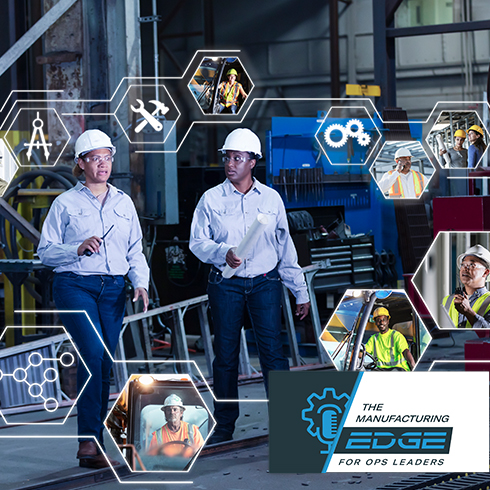Supply Chain Control Towers Do Not Need to Be Elaborate to Be Effective
When you hear the words ‘supply chain control tower,’ you might immediately envision a futuristic aviation command center with interactive screens tracking the movement of inbound and outbound shipments in real-time. While the technology does exist to make this scenario a reality, manufacturers don’t need something quite so elaborate or complex.
What they do need is greater visibility into supply chain risks as they develop so they can proactively make decisions to keep their businesses operating. Manufacturers can gain this information with even the most basic supply chain control tower.
In our recent article, 3 Building Blocks for an Effective Supply Chain Control Tower, we lay out the five stages of the supply chain control tower continuum. While best-in-class predictive/leading supply chain control towers represent the latest in interactive technologies and scenario modeling capabilities, even static control towers—which are much easier and more cost-effective to put into place—deliver valuable insights that can help you stay ahead of supply chain disruptions.
The key is to start small and build on the capabilities over time as resources permit. By taking the following three steps, manufacturers can put the fundamental building blocks into place and begin realizing the advantages of greater visibility, insight, and agility to respond to supply chain disruptions.
3 Building Blocks for an Effective Supply Chain Control Tower
- Create connections between business systems to strengthen your digital thread. A digital thread enables communications and data sharing across all phases of the supply chain. It brings together information from systems including your ERP, supplier performance management system, and transportation, warehouse, and inventory management systems. When all these systems work together, the result is greater end-to-end supply chain visibility that can shine a light on weaknesses and vulnerabilities such a raw materials shortages or logistics problems.
You likely already use many of the systems that will make up your digital thread. To enable your supply chain control tower capabilities, you need to identify the connections between the various systems as well as any discrepancies in naming conventions and data fields that can stand in the way of seamless connectivity. Often, this requires the use of software for building the right linkages. Once connections are mapped, the stage is set for more advanced forecasting and predictive analytics.
- Tie in critical KPIs linked to your competitive requirements. KPI reporting capabilities are a fundamental component of a supply chain control tower, providing the ability to monitor and proactively improve overall supply chain performance. When combined with the greater visibility afforded by the digital thread, it’s possible to see where your own processes, as well as those of your supply chain partners, contribute to supply chain hits and misses.
KPI management software, such as that available from Dploy Solutions, gives you the ability to access, aggregate, and digitize data that can point to process issues and supplier performance problems. It’s easiest to start with the data within your four walls and then bring in data from various parts of the supply chain, such as supplier-specific information on factors such as product availability, distance from factories, production technology, and carbon footprint.
As you bring in additional data sources, your KPI reporting capabilities will advance from a historic view, which is invaluable in identifying the root causes and costs of misses, to a forward-looking view with leading indicators that can keep you ahead of impending supply chain problems. Both types of data deliver valuable insight that can help you continuously improve against your KPIs.
- Improve visibility into order and product status. Consumers already use technologies and alerts from shippers like Amazon, FedEx, and even the USPS to track and plan for deliveries. Manufacturers can, too, by using sensors and IoT technology on their shipments and setting up status alerts from their shipping partners around the world.
While gathering and integrating data from external sources including freight forwarders and ports can require additional effort, it is a good next step for companies that want to receive advanced notice of developing backups and port shutdowns. The key here is to know sooner than later when circumstances may delay critical components, so you have time to explore other options, reroute shipments if necessary, and plan your production lines accordingly. The further manufacturers can see into the future, the greater their predictive capabilities will become, enabling them to stay well ahead of any issues that may develop.
Start Small to Win Big
As supply chain disruptions show no signs of easing up soon, supply chain control towers are rapidly becoming table stakes. But manufacturers do not need to invest in the most advanced technologies right off the bat. Starting with the fundamental components of digital threading, KPI reporting, and order and product visibility can deliver significant and rapid insights to improve your response to supply disruptions today and set the stage for additional capability in the future.
Learn more about the five stages of the supply chain control tower continuum when you read our full article, 3 Building Blocks for an Effective Supply Chain Control Tower.







